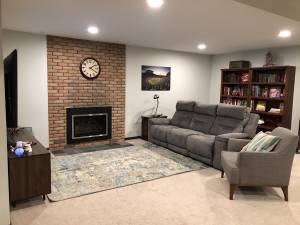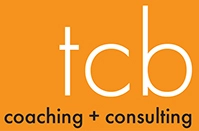
What might have happened if we led with concerns like: “How will we keep the room clean when its done since the boys are so messy?” or “What if we can’t get the decor right?” or “We don’t know where to start, why bother?” or “This project is too big and cumbersome, let’s just skip it.” If we had let these fears lead, we might not have even started the project. Or, we might have started in the middle with paint selection rather than at the beginning with room use and configuration. We let intention be our guide and unfold into new opportunities and connections. Intention also motivated us to keep going through inevitable remodeling setbacks and obstacles to the room’s now completed and useable state.
Fear is a common motivator but it often leads us into safe and familiar dead-ends. Fear is helpful to get us out of harm’s way or keep us on a narrow path when other options are scary. Fear isn’t helpful when we are trying to explore, create, build and change habits, mindsets and attitudes. Coaching helps clients examine their motivation and make the switch from fear to intention-based motivation. Intentions allow us to define priorities, set and achieve goals, and opens doors and opportunities we might not have known were there.
Some clients seek coaching because they have gone as far as they can with their current approach to work and life, and they are exhausted. Their schedules are crammed full of obligations, phone calls and meetings, and they wonder why they can’t get anything done. They start every day by responding to an unending stream of seemingly urgent e-mails out of fear that if they don’t react immediately, they will “never work again.” They believe their clients want the fastest possible response rather than thoughtful and expert work product. They think that no one can do all of “it” as well and quickly as they can, so they don’t delegate and then lament the inability of their staff and employees to develop the skills they need to be helpful. They let obligations and deadlines pile up until the weight is so crushing they have no choice but to “buckle down” and work into the night or on a weekend. Without the experience of nearly suffocating, they can’t finding the motivation to complete projects so they work from crisis to crisis never getting or taking a break. It is a miserable way to work and live that can lead to burnout, depression and other negative outcomes.
When fear is our primary motivator we try so hard to avoid negative consequences that we can’t even identify priorities let alone elevate or promote them into a productive work day. Coaching helps clients examine what motivates them and move from fear to intention. Intention-based motivation leads to skill development and lasting results because the client is moving toward something important to them. Fleeing a fearful situation is limiting and confining. It does not lead to growth, or anything really. We stop when we feel safe or we get so consumed by the constant fleeing that we exhaust ourselves and have little to show for it.
In the Pixar movie Inside Out (2015) we see the inner life of a young girl illustrated by different funny characters who embody Fear, Disgust, Joy, Anger and Sadness. Each of them takes turns “driving” the girl’s control panel of thoughts, experiences, and memories as she moves from Minnesota to California and starts attending a new school. When Anger is driving, the girl is filled with thoughts that fuel and sustain anger. When Joy is driving, she has a more joyful experience of life. Similarly, when Fear is driving she takes actions that propel her away from perceived or real danger and toward safety. There are times when Fear should be driving. And there are times when it should not.
“Almost finished with the potential disasters. Worst scenario is either quicksands, spontaneous combustion or getting called on by the teacher.” -Fear, Inside Out (Pixar, 2015)
When we are motivated by intention instead of fear, we can make conscious choices about how we work and live that align with our goals and values. Intention helps us access long term motivation with more resilience and less stress and overwhelm. We can let fear fear sit in the backseat and maybe even take a nap while we work with intention to create the work and life we want. As you approach the coming year, let intention be your guide. If you think coaching would help, let’s connect! Contact me at 503-734-7232 or heather@tcbcoaching.com
